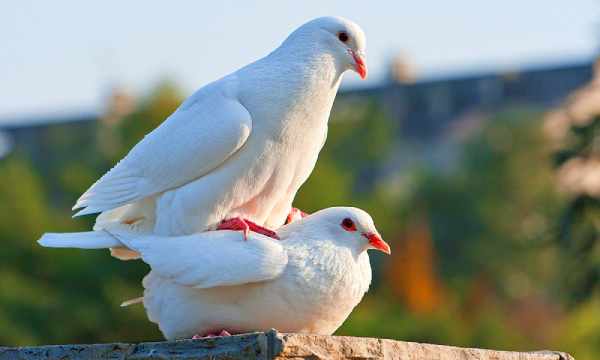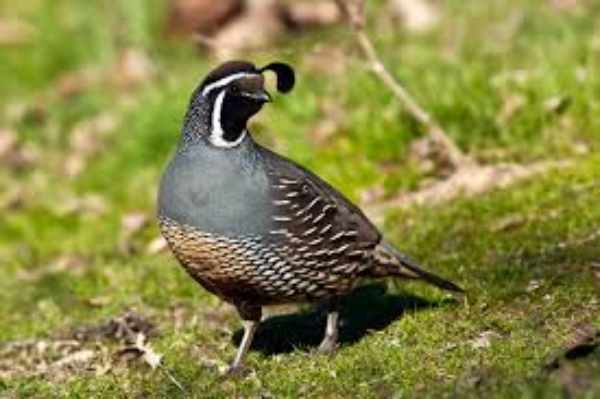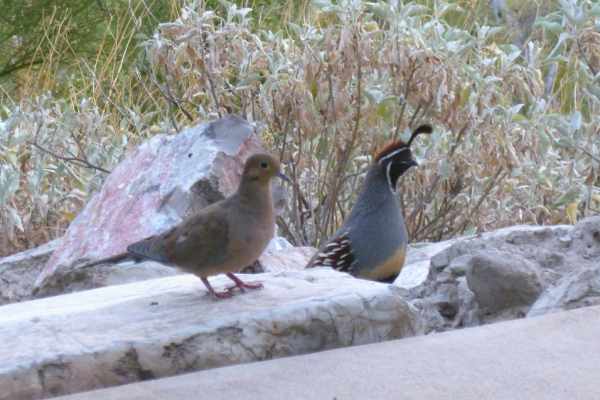Quail and doves are both birds that live in tropical regions. They are mostly found in the American tropics. Before going to know quail vs doves, it is good to know about their history, diet, living behavior, etc. In this article, we will be discussing fascinating facts about Quail VS. Doves, how they are related, and what are the key differences between them.
Table of Contents
Facts You May Not Know About QUAILS AND DOVES
Doves are a type of small, stocky bird that is found all over the world. They are members of the pigeon family. There are hundreds of different species of dove, each with its own unique characteristics. However, some common traits among all doves include their soft and low cooing, as well as their appearance, mating habits, and feeding habits. While they may vary in size and coloration, all doves are gentle birds that make wonderful pets. They are typically very social creatures and enjoy being around people.

Quails are fascinating birds that come in a wide variety of shapes, colors, and sizes. Based on recent research, there are 43 different species of quail found all over the world, with new varieties being discovered all the time. While most quails have cryptic coloration that helps them blend in with their surroundings, some species are quite colorful, with brightly-colored plumage and elaborate patterns.

Quails are also interesting in terms of their reproduction; while most birds lay a dozen eggs or fewer per clutch, some species of quail can lay more than 20 eggs at a time. The bobwhite quail is famous as a game bird and is the most common species found in North America
- Certain varieties of these birds are distinguished by peaks of feathers that hang in front of their faces like commas and originate from the head at the top.
- The majority of doves have stocky builds with small legs and snouts. There is a striking similarity between the proportions of the several species, which is reflected in the plumage. The doves range in appearance, with some being solid shades and others sporting patterns.
- Dove’s color shifts in tone and shades depending on the light. It looks like this bird’s heart is bleeding. Dove’s front chest is a vibrant red that may be mistaken for blood.
- Although it doesn’t appear to be wearing a cap, the dove appears to be wearing a crown of color on its head.
QUAIL VS. DOVES: Difference Between Them
You can find various differences between Quail VS. Dove below.
Habitat
Quail often get lumped together, They are actually a diverse group of birds with a wide range of habitat preferences. Some species, like the Harlequin Quail, are found in meadows and grasslands, while others, like the Japanese Quail, prefer tall grasses or low shrubbery. However, the majority of quail species have overlapping ranges, and each species has its own preferences within that range. For example, the California Quail is commonly found in farmland or agricultural fields, but it will also inhabit forests, deserts, and mountain regions.
The dove is a member of the bird family Columbidae. There are over 330 species of doves, which can be found in a variety of habitats around the world. Many doves are found in tropical rainforests, such as the Amazon rainforest in Brazil. Others can be found in more arid environments, such as deserts and grasslands. Most doves prefer to stay close to urban areas, such as parks, cities, and farms. However, they can also be found in more remote locations, such as woodlands, mountains, swamps, and islands.
Distribution
Quail species can be found all over the world. They are native to every continent except for Antarctica and can be easily spotted in places as diverse as Australia, Africa, and North America. Quail are generally divided into two groups: ‘new world’ quail, which live in America, and ‘old world’ quail, which reside in Asia, Europe, Australia, and Africa. Within these groups, there is a wide range of variation in habitat preference; some species of quail prefer to live in expansive open spaces, while others prefer smaller islands or more enclosed areas.
Doves are some of the most widespread among all birds in the world. They can be found on every continent except Antarctica, and they inhabit a wide variety of habitats. While some dove species live in massive landmasses like Africa and Australia, others are found on small islands or in tiny patches of habitat in places like the Sahara desert. Doves are mostly found in the same sorts of habitats: open areas with plenty of trees and shrubs for cover. This provides them with the food they need as well as a safe place to build their nests.
Behavior
There are many different species of quail, and each one exhibits different behaviors. Some quail are solitary for the entire year, while others may be found living in small groups. They usually spend time searching for food on the ground, but if they feel threatened, they will fly to trees or run into long grass and bushes for protection.
Dove behavior varies depending on the species, many doves live in flocks and enjoy spending time with other members of their group. They typically feed together and will roost side by side. However, some doves prefer to live alone, especially outside of the breeding season. When it comes to mating, most doves are monogamous, but some pairs will breed every year. Some species of dove will even stay with their partner for life.

Reproduction
Most quails lay their eggs in large clutches, with some species laying 20 or more eggs in a single nest. Each species has its own unique habits and preferences. For example, some quails lay their large clutches of eggs in hidden nests, while others lay their eggs in more exposed locations. The timing of reproduction also varies among quail species, with some species reproducing multiple times per year and others only reproducing once every few years. This variation is largely dependent on the quail’s living areas, as different environments offer different opportunities for reproduction. However, temperature and season also play a role in determining when quails reproduce.
One thing that all doves have in common, however, is their nesting habits. They build their nest using sticks and twigs which they collect from the ground or nearby trees. They then carefully construct the nest by interweaving the twigs and sticks until it is sturdy enough to support the eggs. Once the nest is complete, the mother dove will lay one or two eggs and then incubate them for two weeks. After the eggs hatch, the young doves will remain in the nest for several weeks before they are ready to venture out into the world on their own.

Domestication
The common dove is a widely distributed and abundant bird. There are many different species of doves, and they are found in a variety of habitats all over the world. Some species of doves have been domesticated by humans, while others remain wild. The diamond dove and ringneck dove are two examples of domesticated species. These birds are typically kept as pets. They are known for their gentle nature and beautiful plumage. The quail is another bird that has been domesticated by humans. Quail are typically raised for their meat and eggs. However, some people keep them as pets due to their friendly disposition. The Japanese quail is one of the most popular breeds of domesticated quail.
Diet is different
Though most of the Dove species are herbivores there is a great degree of variation in what they specifically eat based on location and type of dove.
Some species eat insects and other invertebrates such as spiders, moths, snails, flies, etc. The vast majority of Dove species are seed eaters, with a few exceptions like the New World quail-doves which are primarily fruit eaters, and the zebra dove which feeds on both fruits and seeds. Also, a small number of Dove species supplement their diet with insects. For example,band-tailed pigeons that live in North America often include acorns and moths in their diet while mourning doves in North America will consume large numbers of snails. Insects may also be consumed by nestlings where parents preen themselves before feeding their young ones giving them not only plant matter but also small insects.
There are many different species of quail, and each has its own unique diet. However, most quail fall into one of two categories: herbivores or omnivores. Herbivorous quail typically eat mostly plants, including berries, buds, grasses, and seeds. Omnivorous quail, on the other hand, also eat insects and other small invertebrates in addition to plants.
No matter what their dietary preferences may be, all quail have one thing in common: they spend a lot of time foraging for food. Quail are constantly on the lookout for beetles, worms, ants, and other insects to eat. They also keep an eye out for any edible plants that they can find.
FAQS
Is the Quail a good pet?
Quails can be terrific pets, but wild ones are terrified of humans and shouldn’t be.
Is Dove a good pet?
Keeping a dove as a pet has a lot of benefits. In contrast to the pleasant and sociable nature of domesticated species, wild doves are not permitted to be kept as pets. Having a wild Dove as a pet is disapproved of in many parts of the world.
Is Quail a dove?
Quail doves make up their group, and they all live in the Neotropics. This genus has species that have lived in South America, southern Mexico, and Central America. People say that quail doves are ground-dwelling birds that live, nest, and eat in thick forests.
What colors are the favourite of doves?
Doves like to have feathers that are soft in color. But many doves have different colors, like pink, green, yellow-grey, and orange which look great together.
How long does a Dove live?
Typically, doves have a lifespan of about 1.5 years.
Do Quails fly away?
Quails are able to fly away and will not return if given the chance.
What are quails good at?
Quails store more meat. Quail are kept as pets, breeders, and hunting dogs. Quail are mostly raised for their eggs and meat.
Do Quails make noise?
In contrast to ducks and roosters, quails are completely silent as they fly. The whistle-like calls of male quails can be heard, while females are nearly silent.
What happens to a dove when its mate dies?
Doves stay with their lifelong partners until one dies, and the strength of their love is so profound that it endures even after death. Doves are well-known for returning to the spot where their partners died in order to watch over them after they have passed.
Are Quails messy?
They are untidy because they flick their food and don’t mind if they make a mess with their drinks.
Final Words
There are several notable things to know about Quail VS. Doves. For instance, doves mate for a lifetime and prefer soft colors. Quails, on the other hand, are considered good pets because they stay quiet. Both birds are relatively small, and both have attracted a fair amount of hunting attention over the years. Doves are generally considered more gentle and romantic than quails, which may account for some of the popularity difference between the two. Quails are also hunted more for their meat than their feathers, whereas doves are often seen as symbols of peace and love. In any case, both birds are interesting creatures with a lot to offer.
References:
https://timesofmalta.com/articles/view/watch-can-you-tell-the-difference-between-a-quail-and-a-turtle-dove.674970
https://www.maltatoday.com.mt/environment/nature/85726/watch_the_differences_between_quail_and_turtle_dove_explained_ahead_of_new_hunting_season#.Y6EY_XZBy3A
https://en.wikipedia.org/wiki/Quail-dove

Zahra Makda
Growing up enjoying the beauty of my village, a good passion for nature developed in me from childhood. Following my passion for the natural world, I have chosen zoology for my graduation, during my undergraduate degree, I participated in many nature trails, bird watching, rescues, training for wildlife conservation, workshop, and seminars on biodiversity. I have a keen interest in invertebrate biology, herpetology, and ornithology. Primary interests include studies on taxonomy, ecology, habitat and behavior.









